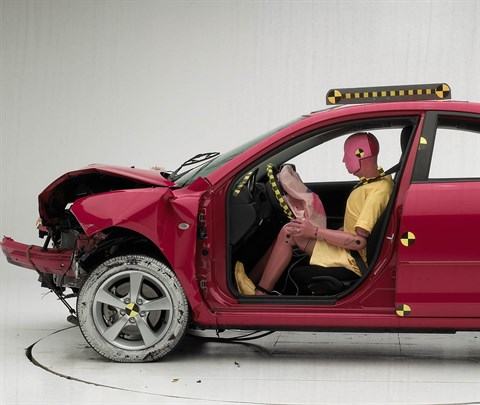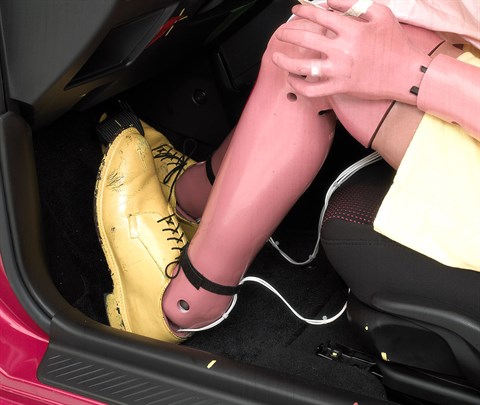Moderate overlap front: original test
Rating applies to 2004-09 models
Tested vehicle: 2004 Mazda 3 s 4-door
The Mazda 3 was introduced in the 2004 model year as a replacement for the Protege.
| Evaluation criteria | Rating |
|---|---|
| Overall evaluation | |
| Structure and safety cage | |
| Driver injury measures | |
| Head/neck | |
| Chest | |
| Leg/foot, left | |
| Leg/foot, right | |
| Driver restraints and dummy kinematics | |

Action shot taken during the frontal offset crash test.

The dummy's position in relation to the steering wheel and instrument panel after the crash test indicates that the driver's survival space was maintained very well.

Smeared greasepaint indicates where the dummy’s head hit the roof rail during rebound. Head acceleration from this hit was low.

Intrusion into the driver's space was minimal, and forces on the legs and feet were low.
Head restraints & seats
Seat type: Base seats
| Overall evaluation | |
|---|---|
| Dynamic rating | |
| Seat/head restraint geometry |
Seat type: Seats with adjustable lumbar
| Overall evaluation | |
|---|---|
| Dynamic rating | |
| Seat/head restraint geometry |
About the head restraint & seat test
Currently, IIHS tests apply only to front seats.
